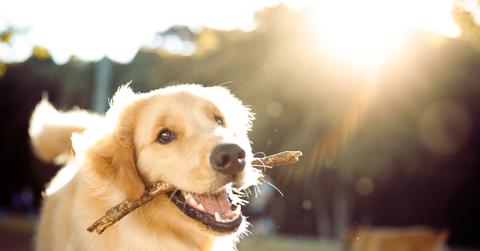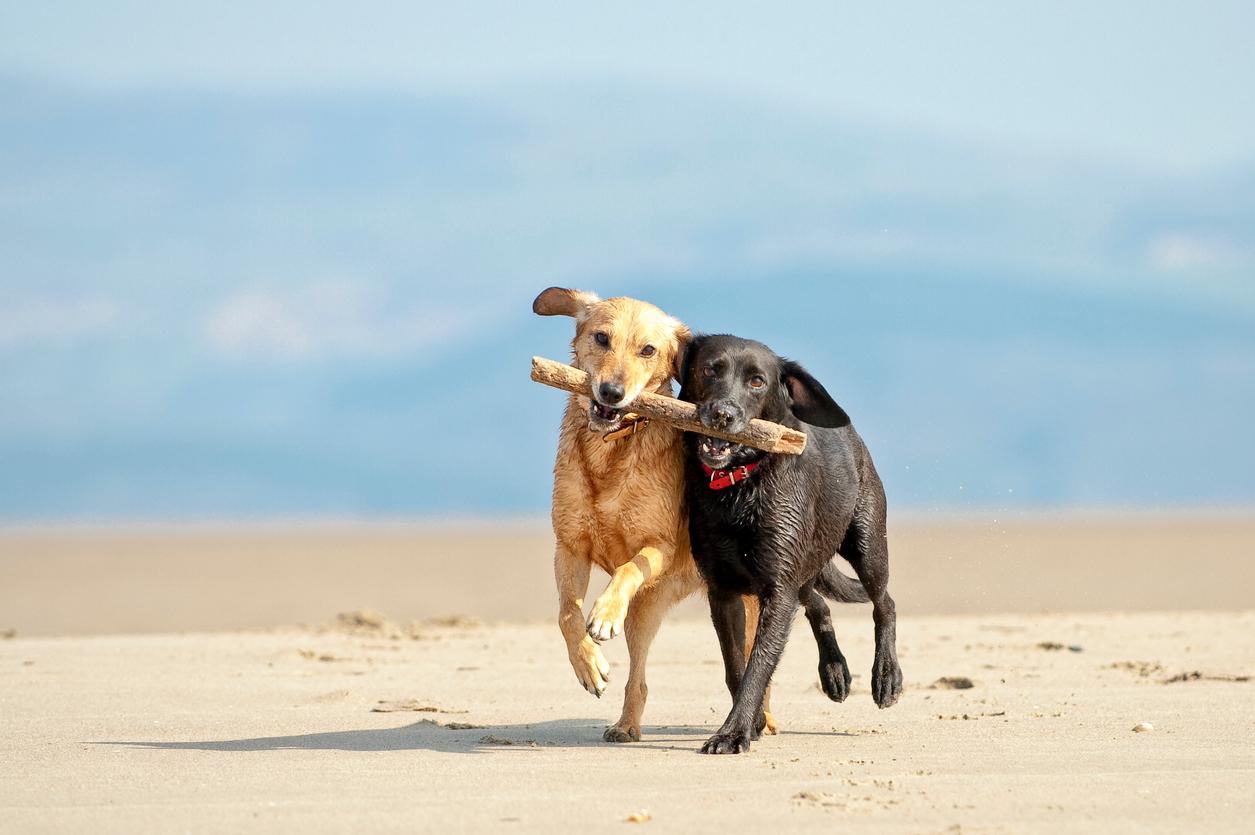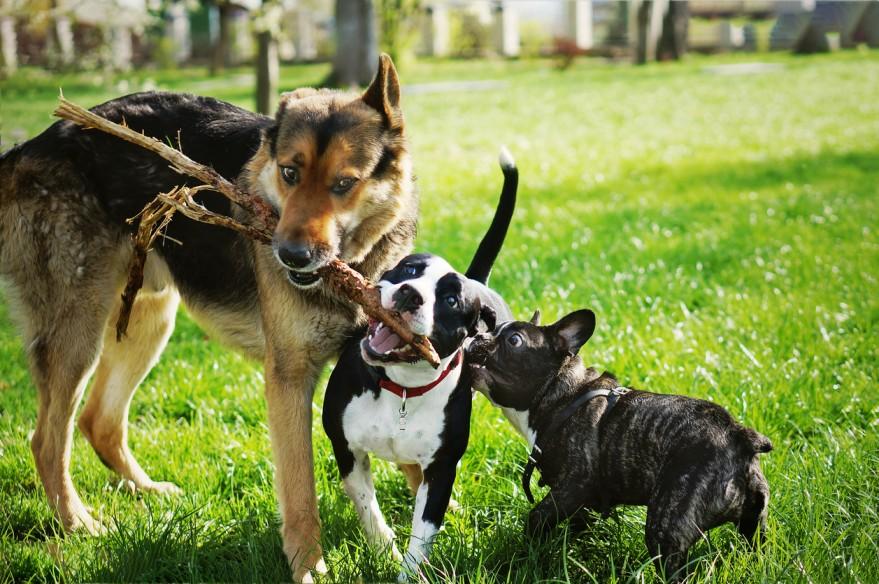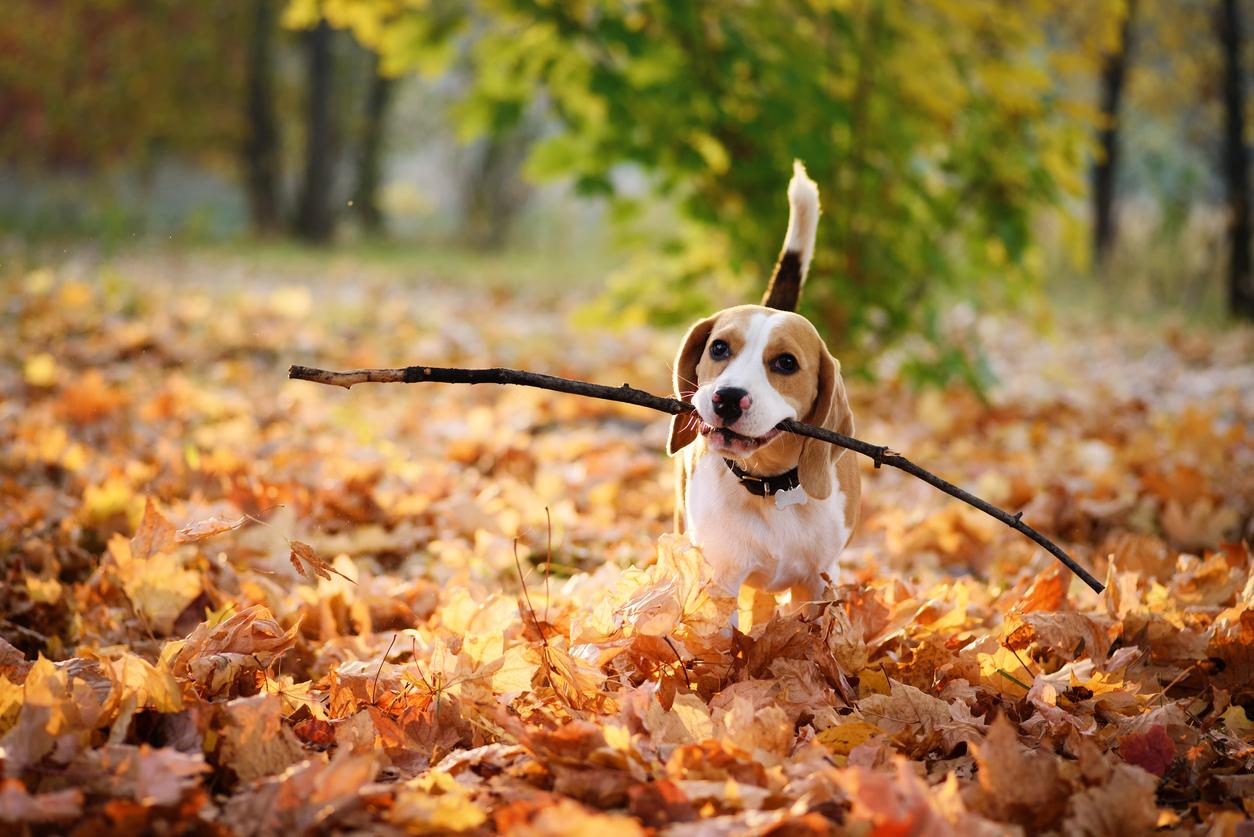Why Do Dogs Like Sticks? Why Vets Say It's in Their Nature
Dog breeds known for high energy, a playful nature, and a strong desire to fetch items especially enjoy sticks.
Published June 27 2024, 5:07 p.m. ET

Whether you and your companion dog reside in a rural area rife with trees and other greenery or you and your foster dog in the city are seeking the best dog park to get some fresh air, you'll find sticks and branches strewn about.
Regardless of the size of the dog breed, it seems our beloved pups are enamored with sticks of all sizes.
Why, given a stick's crunchy texture, laden with soil and blades of grass, are dogs so attracted to sticks? Is it healthy for a dog to play with or eat sticks?
We'll answer these questions and more below so you can enjoy peace of mind the next time you and your canine companion are out for a walk and stumble upon a tantalizing branch.

Why do dogs like sticks?
Put simply, sticks are free toys from nature and certain dog breeds may be more instinctively inclined to enjoy them. As BBC Science Focus Magazine explains it, breeds like the energetic Cocker Spaniels and playful labradors are more predisposed to view a stick as a toy to retrieve.
Other breeds may learn over time that the sight of a crunchy stick during a walk means bonding and playtime with humans, according to Science Focus.
As branch manager and assistant branch manager memes attest, dogs love sticks of all sizes. There are a few reasons for that, as Zigzag Petcare Services explains:
- The aroma from a stick may be alluring
- The size of the stick may pose an exciting challenge for the dog to gnaw
- Because of the relatively simple shape of a stick, they're easy to carry in the mouth, hold down with a paw to chew on, or toss in the air for a game of self-catch
In short, sticks are a free, easily accessible, versatile toy. All that said, the safety and edibility of sticks may be a cause for concern for some dog breeds and dogs with different health needs.

Why do dogs eat sticks?
Per the Wag! app, puppies are especially prone to the desire to consume non-food items such as sticks, and if they do not safely transcend this stage of development, it may be diagnosed as a condition known as "pica" in both humans and non-human animals.
Aside from that anomaly and early stage of development, mature dogs eating sticks — rather than satisfyingly chewing on them — may either signal an underlying health condition or may soon develop into one, per Wag!
Dogs with medical conditions such as anemia or another nutritional deficiency from an improper diet (such as one without meat) may also be more likely to turn to sticks in search of nutrients.
This might also be a red flag indicating dental issues, behavioral concerns, or other digestive and hunger cues. Consult with a veterinarian in conjunction with a certified behaviorist to ensure your companion dog is properly cared for and potential concerns are identified and addressed.

Is it OK for my dog to eat sticks?
The Canada-based Mill Creek Animal Hospital advises that eating or chewing on sticks is riskier than necessary for your dog. While the availability of sticks makes them an attractive item for your dog, there are just too many potential avenues for danger.
A chunky stick may very well cause soft tissue or tooth damage for your dog, per the Canadian vet. Splinters might pose a choking hazard, additional dental concerns, or damage to the digestive tract.
With so many sustainable dog and cat toy brands offering many durable and safe toy options, it is best to avoid sticks and instead opt for trusted toys intended for the safety and happiness of your pup.